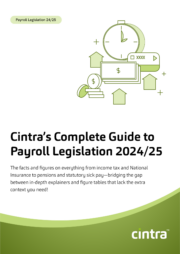Parental pay can be a complex topic for businesses to navigate, but it’s an important one to understand if you want to support your employees in balancing work and family life. There are several types of parental pay available to eligible employees, so let’s take a closer look at what you need to know for the upcoming tax year (2023-2024).
| Payment type | Weekly rate | Definition |
|---|---|---|
| Lower Earnings Limit (LEL) | £123 | What an employee must earn per week to qualify for statutory payments. |
| Statutory Maternity Pay (SMP) | £172.48 | Eligible new mothers can claim Statutory Maternity Pay for up to 39 weeks during the leave. |
| Statutory Paternity Pay (SPP) | £172.48 | Eligible new fathers can claim Statutory Paternity Pay for up to two weeks; this must be taken all at once. |
| Statutory Adoption Pay (SAP) | £172.48 | Employees who adopt a child or have a baby through surrogacy are entitled to a payment from their employer that helps them take time off work to look after the child. |
| Statutory Parental Bereavement Pay (SPBP) | £172.48 | This provides parents who lose a child or suffer a stillbirth with the right to take two weeks off work. |
| Statutory Shared Parental Pay (ShPP) | £172.48 | Both new parents might be entitled to pay during parental leave. |
Firstly, there’s Statutory Maternity Pay (SMP), which is paid to eligible employees who take time off to have a baby, known as maternity leave. The current rate of SMP is 90% of the employee’s average weekly earnings for the first 6 weeks, followed by £172.48 per week (or 90% of their average weekly earnings, whichever is lower) for the next 33 weeks. This means that eligible employees can receive up to 39 weeks of SMP.
Secondly, there’s Statutory Paternity Pay (SPP), which is paid to eligible employees who take time off to support their partner or the mother of their child, known as paternity leave. The current rate of SPP is £172.48 per week, or 90% of the employee’s average weekly earnings (whichever is lower). Eligible employees can receive up to 2 weeks of SPP.
Thirdly, there’s Shared Parental Leave (SPL), which allows eligible employees to share up to 50 weeks of leave and up to 37 weeks of pay between them. The rate of Shared Parental Pay (ShPP) is £172.48 per week, or 90% of the employee’s average weekly earnings (whichever is lower).
Finally, there’s Statutory Adoption Pay (SAP), which is paid to eligible employees who take time off to adopt a child. The current rate of SAP is £172.48 per week, or 90% of the employee’s average weekly earnings (whichever is lower). Eligible employees can receive up to 39 weeks of SAP.
Read more about unpaid parental leave.
Overall, it’s important for businesses to understand the different types of parental pay available in the UK, so you can support your employees during this important time in their lives. By doing so, you can help your employees balance their work and family responsibilities and create a more supportive workplace culture!

Payroll Legislation Guide
The facts, figures, thresholds and allowances for 2024/25 spanning tax, National Insurance, pensions, statutory payments and more.
Download now


